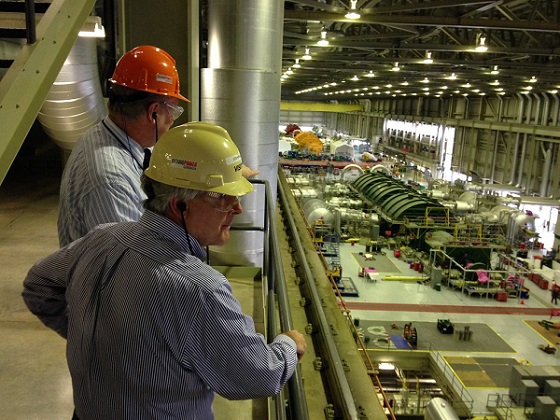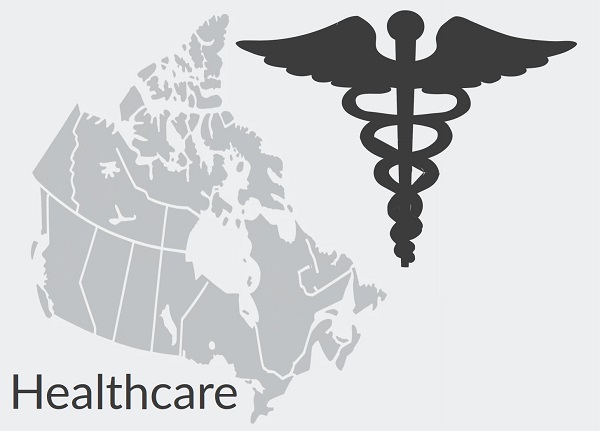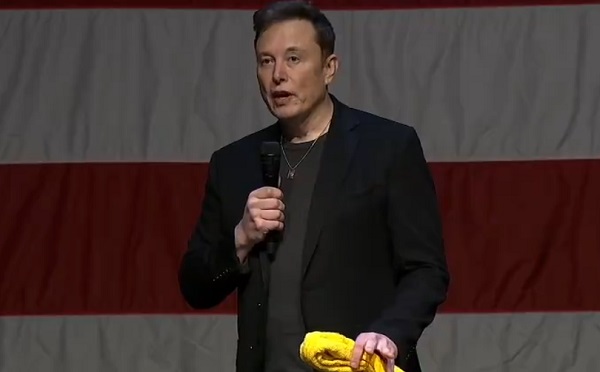Opinion
FOOD BANKS

Open Letter to The Honourable Mona Fortier, Minister of Middle Class Prosperity
December 4, 2020
FOR IMMEDIATE RELEASE
Red Deer – Mountain View, AB
Feed Ontario recently released “Hunger Report 2020”. The report highlights some troubling details surrounding food bank usage in Ontario between April 1, 2019 and June 30, 2020.
While usage during the pandemic is concerning, it is the pre-pandemic figures that are truly concerning. Between April 1, 2019 and March 31, 2020, 537,575 Ontarians accessed food banks (5.3% increase over the previous year).
The report also indicates that nearly half of food bank visitors worried about getting evicted or defaulting on mortgage payments in the coming months. Additionally, 93% reported borrowing money, accessing payday loans or using credit cards to pay for monthly necessities.
As Prime Minister Trudeau has stated, “We [Federal government] took on debt so Canadians wouldn’t have to.”
The Hunger Report 2020 indicates otherwise.
According to your December 2019 mandate letter from the Prime Minister, your ministerial position was created with the intention of improving the use of data in government decision-making.
The food bank usage data should be the only data needed to indicate that Canadians are struggling.
We do not want handouts and subsidy programs. We want to work, to provide for our families and to support vulnerable individuals within our communities.
Canadians are urging you to act on their behalf to reduce government red-tape, end crony capitalism, stop corporate subsidies, put aside plans for a “green economy”, encourage free market competition and stop the war on work.
Sincerely,
Jared Pilon
Candidate for Red Deer – Mountain View, AB
Energy
Is Canada the next nuclear superpower?

From Resource Works
The rise of AI and other technologies have pushed energy demand through the roof, and Canada can help power that with nuclear.
Good to see Prime Minister Justin Trudeau pushing nuclear power as a key contributor to meeting the world’s soaring demand for electricity.
“The energy consumption necessary around AI (artificial intelligence) nobody has properly understood yet,” he said. “We have stepped up big time on nuclear.”
He cited Canada’s uranium reserves and progress in building both full-scale CANDU reactors and small modular reactors (SMRs). He said other countries need to “skate where the puck is going” on cleaner energy sources.
“We know that if we are going to meet our net-zero targets around the world, and certainly in this region, nuclear is going to be really part of the mix.”
He stopped short of saying Canada would build more major nuclear reactors for domestic use but spoke about the development of SMRs. Ottawa has previously stated it wants to become “a global leader in SMR deployment.”
Meanwhile, International Trade Minister Mary Ng said Canada is launching a gateway for nuclear development in the Asia-Pacific region. She said growing Pacific Rim economies will face increasing demand for electricity, not just to curb emissions.
“All this followed CANDU licence-holder AtkinsRéalis announcing a “multi-billion-dollar” sale of two CANDU reactors to Romania, the first to be built since 2007. The federal government contributed $3 billion, the company said.
And in one of our Resource Works Power Struggle podcasts, energy journalist Robert Bryce said: “We’re seeing the revitalization of the nuclear sector… There are a lot of promising signs.”
Also from Bryce: “Forty-seven per cent of the people on the planet today live in electricity poverty. There are over three billion people who live in the unplugged world; 3.7 billion who live in places where electricity consumption is less than what’s consumed by an average kitchen refrigerator.”
Policy Options magazine notes how Canada and 21 other countries signed a 2023 pledge to triple nuclear energy capacity by 2050, and says: “The reality would appear to be clear: there is no feasible net-zero future without the deployment of new nuclear power.”
For Canada, it adds: “We have an opportunity to expand our global status, but this requires overcoming years of policy inaction while other nations have modernized their nuclear strategies. To triple our nuclear capacity by 2050, we need clear priorities and unwavering political commitment.”
Earlier this year, François-Philippe Champagne, federal minister of innovation, science and industry, said nuclear power needs to grow for the world’s renewable-energy economy.
“Nuclear, definitely. For me, we have to look at hydro, we have to look at nuclear, we have to look at small modular reactors, we have to look at wind, we have to look at solar.”
Jonathan Wilkinson, energy and natural resources minister, promised to expedite the approval process for new Canadian nuclear projects.
Canada now gets about 15% of its electricity from nuclear generation, mostly from reactors in Ontario.
But the last nuclear reactor to come into service in Canada was at the Darlington station, east of Toronto, back in 1993. No new nuclear project has been approved since then, but multi-million-dollar upgrades are underway at existing Ontario plants.
Heather Exner-Pirot of the Macdonald-Laurier Institute and Jesse McCormick of the First Nations Major Projects Coalition see SMRs and micro-reactors as a plus for rural and remote areas of Canada that now rely on diesel to generate power. Some First Nations are also interested.
However, the two commentators point out that nuclear developers will need Indigenous support and will have to “provide meaningful economic benefits and consider Indigenous perspectives in project design.”
Now, the Wabigoon Lake nation in Ontario has stepped up as a potential host to a deep underground facility for storing nuclear waste.
As Canada looks to SMRs to meet electricity demand, our country also hopes to sell more uranium to other nations—perhaps with a little help from Russia.
In October, Russian President Vladimir Putin proposed restrictions on Russian uranium exports in retaliation for Western sanctions on Russian oil, gas, and LNG.
That boosted hopes for increased exports of Canadian uranium.
Canada, once the world’s largest uranium producer, is now the world’s second-largest, behind Kazakhstan, and accounts for roughly 13% of global output.
Putin’s threat gave more momentum to the plans underway by NexGen Energy for its $4-billion Rook 1 uranium mine in Saskatchewan.
The Canadian Nuclear Safety Commission has completed its final technical review of the project. Next comes a commission hearing, followed by a final decision on approval.
NexGen is working on detailed engineering plans in preparation for full construction, pending federal approval.
NexGen could push Canada to become the world’s largest uranium producer over the next decade. Other companies are rushing to Saskatchewan to start exploration projects in the Athabasca region, while existing players are reopening dormant mines.
All this follows the commitment by nearly two dozen countries in 2023 to triple their nuclear-energy output by 2050.
And so Britain’s BBC News topped a recent roundup on nuclear power with this headline: “Why Canada could become the next nuclear energy ‘superpower’.”
Business
The Health Research Funding Scandal Costing Canadians Billions is Parading in Plain View

Why Can’t We See the Canadian Institutes for Health Research-Funded Research We Pay For?
Right off the top I should acknowledge that a lot of the research funded by the Canadian Institutes for Health Research (CIHR) is creative, rigorous, and valuable. No matter which academic category I looked at during my explorations, at least a few study titles sparked a strong “well it’s about time” reaction.
But two things dampen my enthusiasm:
- Precious few of the more than 39,000 studies funded by CIHR since 2011 are available to the public. We’re generally permitted to see no more than brief and incomplete descriptions – and sometimes not even that.
- There’s often no visible evidence that the research ever actually took place. Considering how more than $16 billion in taxpayer funds has been spent on those studies over the past 13 years, that’s not a good thing.
If you’ve been reading The Audit for a while, you know that I’ll often identify systems that appear vulnerable to abuse. As a rule though, I’m reluctant to invoke the “s” word. But here’s one place where I can think of no better description: the vacuum where CIHR compliance and enforcement should be is a national scandal.
Keep these posts coming: subscribe to The Audit.
I’ve touched on these things before. And even in that earlier post I acknowledged how:
…as a country, we have an interest in investing in industry sectors where there’s a potential for high growth and where releasing proprietary secrets can be counter productive.
So we shouldn’t expect access to the full results of every single study. But that’s surely not true for the majority of research. And there’s absolutely no reason that CIHR shouldn’t provide evidence that something (anything!) productive was actually done with our money.
Because a well-chosen example can sometimes tell the story better than huge numbers, I’ll focus on one particular study in just a moment. But for context, here are some huge numbers. What follows is an AI-powered breakdown by topic of all 39,751 research grants awarded by CIHR since 2011:
Those numbers shouldn’t be taken as anything close to authoritative. The federal government data doesn’t provide even minimal program descriptions for many of the grants it covers. And many descriptions that are there contain meaningless boilerplate text. That’s why the “Other – Uncategorized” category represents 72 percent of all award dollars.
Ok. Let’s get to our in-the-weeds-level example. In March 2016, Greta R. Bauer and Margaret L. Lawson (principal investigators) won a $1,280,540 grant to study “Transgender youth in clinical care: A pan-Canadian cohort study of medical, social and family outcomes”.
Now that looks like vital and important research. This is especially true in light of recent bans on clinical transgender care for minors in many European countries following the release of the U.K.’s Cass report. Dr. Cass found that such treatment involved unacceptable health risks when weighed against poorly defined benefits.
A website associated with the Bauer-Lawson study (transyouthcan.ca) provides a brief update:
As of December of 2021, we have completed all of our planned 2-year follow up data collection. We want to say thanks so much to all our participants who have continued to share their information with us over these past years! We have been hard at work turning data into research results.
And then things get weird. That page leads to a link to another page containing study results, but that one doesn’t load due to an internal server error.
Before we move on, I should note that I come across a LOT of research-related web pages on potentially controversial topics that suddenly go off-line or unexpectedly retire behind pay walls. Those could, of course, just be a series of unfortunate coincidences. But I’ve seen so many such coincidences that it’s beginning to look more like a pattern.
The good news is that earlier versions of those lost pages are nearly always available through the Internet Archive’s WayBackMachine. And frankly, the stuff I find in those earlier versions is often much more – educational – than whatever intentional updates would show me.
In the case of transyouthcan.ca, archived versions included a valid link to a brief PDF document addressing external stressors (which were NOT the primary focus of the original grant application). That PDF includes an interesting acknowledgment:
This project is being paid for by a grant from the Canadian Institutes of Health Research (CIHR). This study is being done by a team of gender-affirming doctors and researchers who have many years of experience doing community-based trans research. Our team includes people who are also parents of trans children, trans adults, and allied researchers with a long history of working to support trans communities.
As most of the participants appear to have financial and professional interests in the research outcome, I can’t avoid wondering whether there might be at least the appearance of bias.
In any case, that’s where the evidence trail stopped. I couldn’t find any references to study results or even to the publication of a related academic paper. And it’s not like the lead investigators lack access to journals. Greta Bauer, for example, has 79 papers listed on PubMed – but none of them related directly to this study topic.
What happened here? Did the authors just walk off with $1.2 million of taxpayer funding? Did they do the research but then change their minds about publishing when the results came in because they don’t fit a preferred narrative?
But the darker question is why no one at CIHR appears to be even mildly curious about this story – and about many thousands of others that might be out there. Who’s in charge?
Keep these posts coming: subscribe to The Audit.
-

 Brownstone Institute24 hours ago
Brownstone Institute24 hours agoThe Most Devastating Report So Far
-

 Economy1 day ago
Economy1 day agoCOP 29 leaders demand over a $1 trillion a year in climate reparations from ‘wealthy’ nations. They don’t deserve a nickel.
-

 Censorship Industrial Complex1 day ago
Censorship Industrial Complex1 day agoAnother Mass Grave?
-

 ESG11 hours ago
ESG11 hours agoCan’t afford Rent? Groceries for your kids? Trudeau says suck it up and pay the tax!
-

 Alberta1 day ago
Alberta1 day agoMAiD In Alberta: Province surveying Albertans about assisted suicide policies
-

 Energy1 day ago
Energy1 day agoOttawa’s proposed emission cap lacks any solid scientific or economic rationale
-

 Alberta1 day ago
Alberta1 day agoOn gender, Alberta is following the science
-

 International12 hours ago
International12 hours agoElon Musk praises families on X: ‘We should teach fear of childlessness,’ not pregnancy




